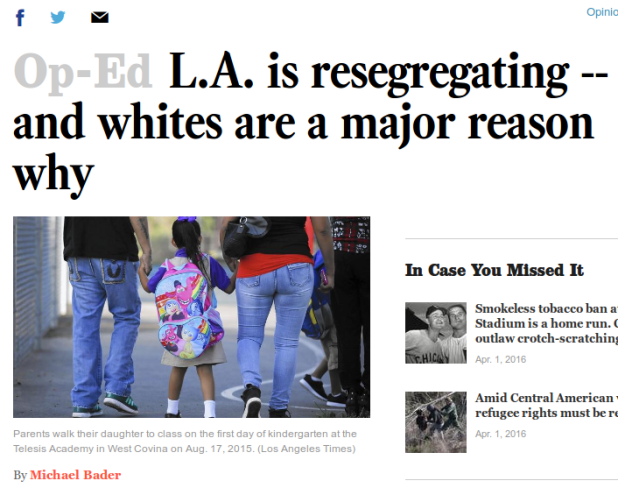Andrew Anglin
Daily Stormer
April 2, 2016
Evil Whites are now forcing vibrant colorfuls to be poor by moving out of their neighborhoods.
How dare they?
Note that no one knows why neighborhoods become poor and crime-ridden when all the Whites leave, though it is believed by all university professors that Whites use voodoo magic to make this happen.
Some of America’s most racially integrated neighborhoods and cities are on a path to becoming segregated all over again. In Los Angeles this means neighborhoods where Latinos and Asians now live alongside black or white neighbors may have few to no whites or blacks in 10 to 20 years.
In research I conducted with Siri Warkentien, another sociologist, we used a statistical model and census data to identify the most common changes in racial composition in 10,681 neighborhoods in metropolitan L.A., Houston, Chicago and New York, beginning as far back as 1970 in some areas. That starting point corresponds with the implementation of the 1968 federal Fair Housing Act, which protects buyers and renters from discrimination in choosing where to live.
Covina, 22 miles east of downtown L.A., provides an example of one city at risk of resegregating. Whites make up about 26% of Covina as of 2014 and Latinos about 57%. Typically we consider neighborhoods with at least 10% of each group to be racially integrated. But the mix is crumbling. Latinos made up 13% of Covina’s residents in 1980, 26% in 1990, 40% in 2000, and 52% in 2010. Four years later, according to the most recent census estimate, the Latino population had grown by five more percentage points. By 2025, Covina is likely to be overwhelmingly Latino.
Something similar happened already in nearby Norwalk. In 1990, just under half its residents were Latino and about a third were white (not unlike Covina now). By 2014, Latinos made up 70% of residents and whites 11%.
The data show that vast portions of south and east Los Angeles are slipping from mixed populations toward single race populations. And the change has not just occurred in formerly white areas. One of the trajectories that we identified followed a similar pattern in neighborhoods that were once black. Compton residents were nearly three-quarters black in 1980; by 1990, the mix was about 52% black and 43% Latino; in 2014, two-thirds Latino. Such slow but steadily increasing Latino growth can be found in 46% of the neighborhoods we studied in the Los Angeles metropolitan region.
…
Because so much of the shift in integration is based on whites’ decisions about where they will move next, Los Angeles’ future demographic patterns are in their hands. If whites do their homework, and find out more about neighborhoods that are now unfamiliar to them, they can make L.A. an example to the nation of how to create integration in the 21st century. Otherwise, knowingly or not, they may reproduce the problems of racial segregation for the future.
“The problems of racial segregation,” of course, are that non-White neighborhoods are crime-ridden hellholes, defined by drugs and poverty.
Racist Whites need to learn that they have a duty to live among non-Whites. Not just because of Black slavery, but also because of the Holocaust and the Crusades, they have a duty to make these neighborhoods more livable by living there.
 Daily Stormer The Most Censored Publication in History
Daily Stormer The Most Censored Publication in History



